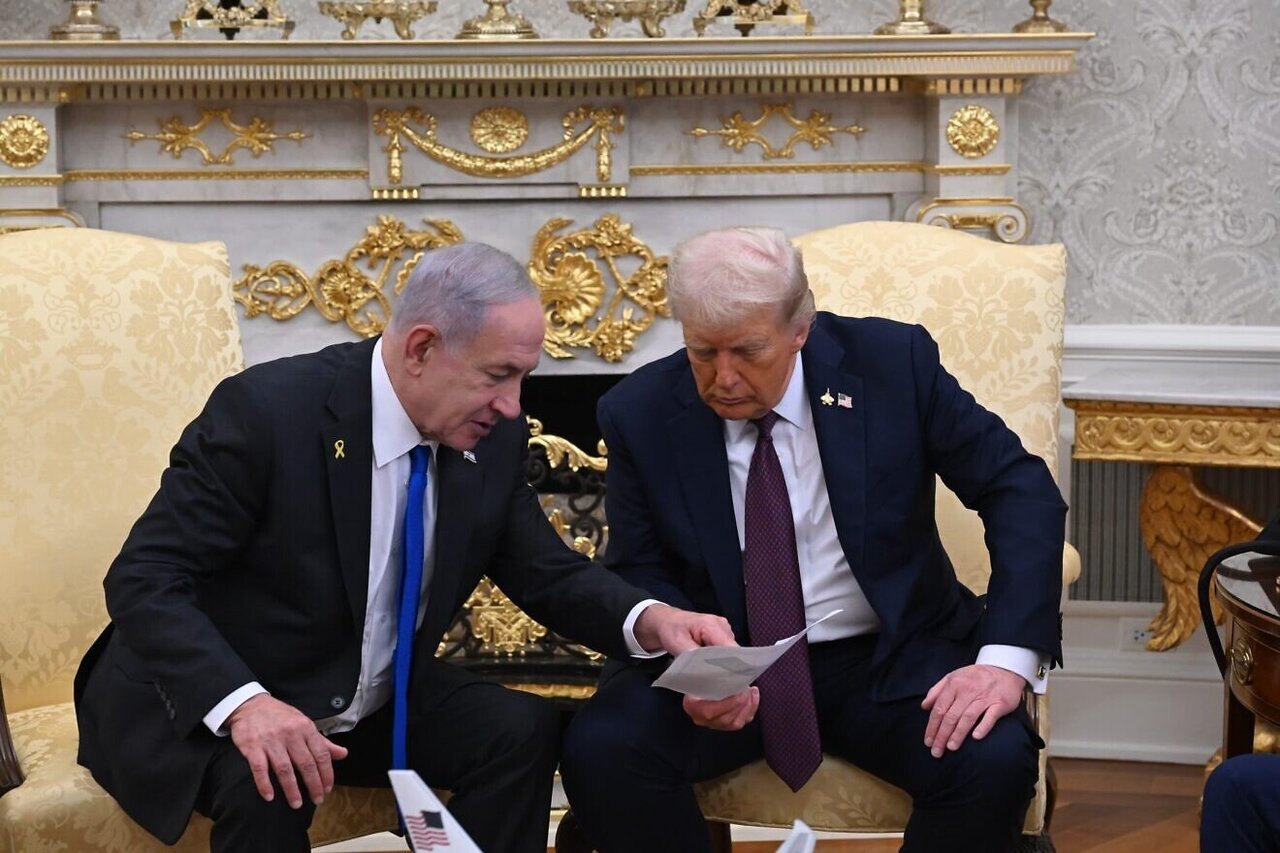Peace plan or disaster plot
Inside Trump's 20-point proposal to end the Gaza war

TEHRAN – Nearly two years into its genocidal war on Gaza, Israel backed by the United States finds itself at a stalemate. Despite relentless military campaigns, Gaza’s resistance groups remain active, their networks weakened but far from defeated. The battlefield has failed to deliver the decisive victory Israel had hoped for, and a new strategy is now emerging.
U.S. President Donald Trump, eager to reassert himself as a global power broker, and Israeli Prime Minister Benjamin Netanyahu, struggling to maintain his fragile coalition at home, have unveiled a ceasefire proposal for Gaza. Marketed as a humanitarian breakthrough, the plan’s real aim is not reconciliation but the disarmament of Palestinian resistance groups. It is a ceasefire designed not to resolve the conflict but to reshape it in Israel’s favor, institutionalizing control while stripping Palestinians of their only means of leverage.
The White House issued the text of its 20-point proposal on Monday as Trump and Netanyahu met in Washington. The proposal outlined the framework for remaining captives, reconstruction, governance, and disarmament. Yet, despite its presentation as a peace initiative, the plan is overwhelmingly one-sided in Israel’s favor. Key Israeli strategic objectives, including retention of the Philadelphi corridor, are left intact, ensuring Israel maintains permanent control over crucial access points in Gaza.
Israel’s political dilemma
Israel entered the war with the stated goal of eliminating Hamas after the resistance movement carried out a surprise military attack in southern Israel on October 7, 2023. Yet, despite deploying its full military arsenal, Israel has not been able to achieve this objective. Hamas and allied groups continue to demonstrate resilience, using asymmetric tactics that blunt Israel’s conventional superiority.
Netanyahu said Israeli forces will remain in Gaza, bluntly stating a full withdrawal is “not happening.”
At home, Netanyahu faces mounting political pressure: his fragile coalition is split, war fatigue is spreading across Israeli society, and international criticism of the humanitarian catastrophe in Gaza has intensified. The war that was supposed to secure Israel’s dominance has instead exposed its vulnerabilities.
In this context, the ceasefire plan emerges not as an act of goodwill but as a political lifeline. For Israel, it offers a way to recast failure as compromise. For Trump, it is a chance to return to the Middle East stage as a peacemaker, even if peace is the last thing this plan guarantees.
Diplomacy as a weapon
The proposal’s central logic is clear: exchange guns for promises. Its key provisions include:
Immediate Ceasefire: Hamas would release captives within 72 hours in exchange for Palestinian prisoners.
Disarmament: Resistance groups must dismantle tunnels, surrender weapons, and end all military activity.
International oversight: Foreign forces would replace Israeli troops, tasked with enforcing disarmament.
Security buffer zone: Israel would retain a permanent presence inside Gaza under the vague term security perimeter and maintain control of the Philadelphi corridor, ensuring continued access and influence.
Governance: A transitional authority, overseen by a “Board of Peace,” would manage Gaza, with figures such as Tony Blair controversially floated as potential leaders.
While framed as a roadmap to stability, the plan’s substance is heavily tilted toward Israeli interests. It secures Israel’s military and territorial objectives through diplomacy while offering Palestinians little beyond aid and reconstruction.
From skepticism to outrage
Although the proposal has received support from several countries, it has also drawn sharp criticism.
Hamas and others have already rejected the disarmament clause outright, insisting that armed struggle remains a right until the occupation ends. They fear Israel could resume war at will once captives are released and leverage is lost.
Reuters quoted a Hamas source calling Trump’s plan biased and impossible, while a Palestinian official said it adopts all Israeli conditions.
Former UK Labour Party leader Jeremy Corbyn has criticized Blair’s involvement, saying the former British prime minister’s “catastrophic decision to invade Iraq cost thousands upon thousands of lives.”
Australian Senator David Shoebridge also stated: “Tony Blair’s only role in the Middle East should be as a defendant, on trial for commencing the illegal and disastrous Iraq war that destroyed millions of lives.”
Additionally, Balakrishnan Rajagopal, the UN’s special rapporteur on housing warned that buffer zones and foreign transitional authority amounted to land grabs disguised as peace.
The illusion of peace
The Trump-Netanyahu ceasefire proposal is not a pathway to peace but a strategic maneuver to neutralize Palestinian resistance through non-military means. It represents a shift from bombs to boardrooms, but the underlying goal remains the same: to deny Palestinians sovereignty while consolidating Israeli control.
For Palestinians, disarmament without independence is not peace but capitulation. For the international community, the plan is a reminder that true stability in the region cannot be engineered through coercion or external control. Real peace will come only when Palestinian rights, freedom, and justice are recognized—not when resistance is stripped away under the false promise of reconstruction.
Islamic Jihad's Ziad al-Nakhala said the proposal reflects Israel’s full position, imposing through Washington what war could not, risking regional ignition.
Any ceasefire or reconstruction plan must give Palestinians real control over Gaza, including its borders and governance. Palestinians should be allowed to defend themselves, and disarmament should be voluntary, tied to fair political agreements.
Israel should not maintain buffer zones, the Philadelphi corridor, or the ability to restart military operations. International authorities should support, not replace, Palestinian governance, and their actions should be transparent and accountable.
Mediators must be neutral and credible, avoiding figures with controversial histories of Middle Eastern interventions in positions of operational power over Gaza. Aid and reconstruction efforts should focus on rebuilding hospitals, schools, and infrastructure while strengthening Palestinian independence, rather than using aid as a tool of political control.
